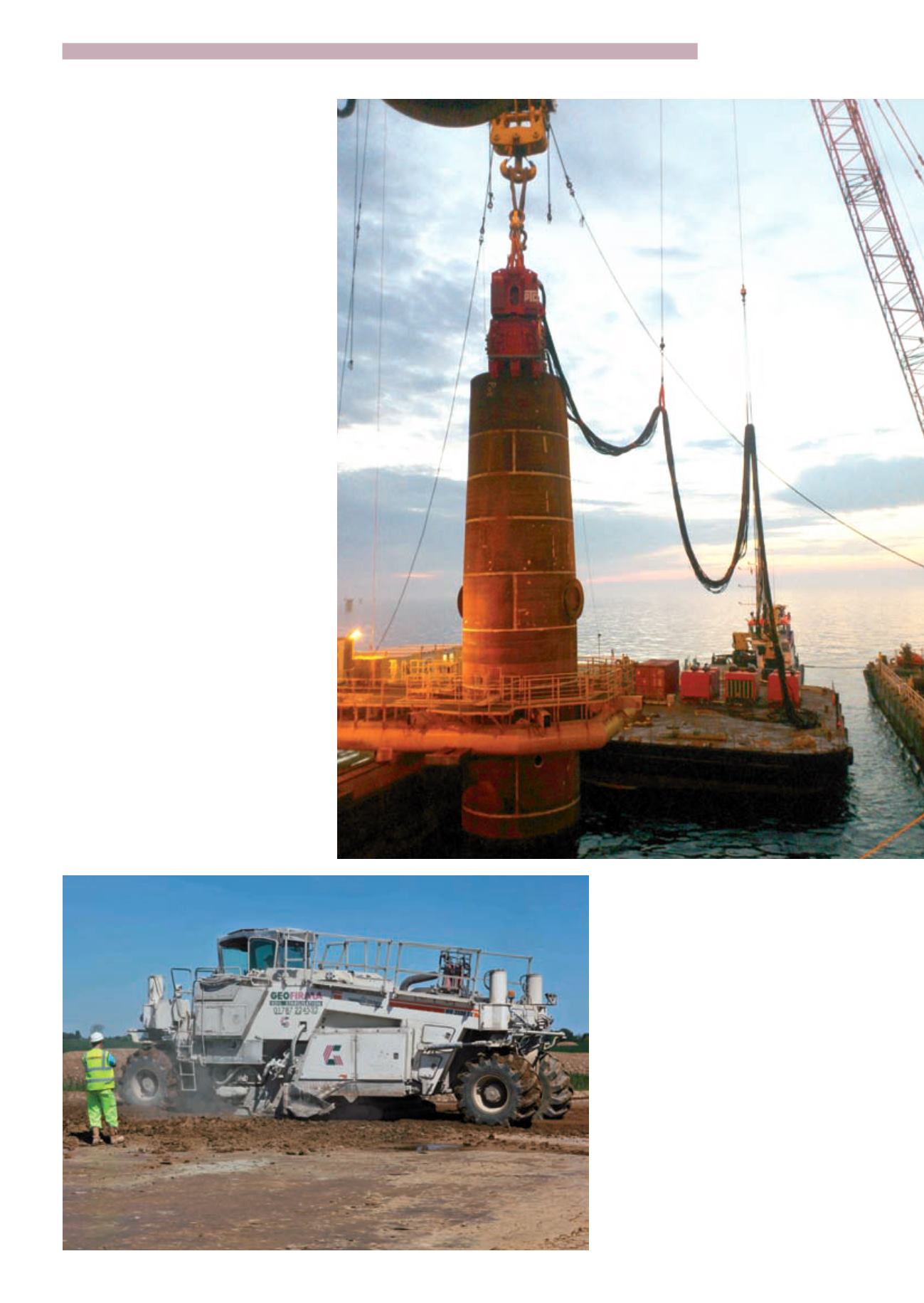
45
CONSTRUCTION EUROPE
SEPTEMBER 2013
FOUNDATIONS
This method is useful with deep basements
in poor ground conditions as it prevents the
auger from deviating from the intended path.
This is especially important when constructing
a secant-piled wall where accurate alignment
is essential. It is also gaining ground as a
foundations technique for cities, because it
causes minimal noise and vibration.
“Lots of developers now want deep
basements and as projects such as this one
are often in tight urban sites, cased CFA piling
really comes into its own”, said Miller technical
manager James Hayward.
Miller bought a 140 tonne Casagrande cased
CFA piling rig – believed to be the largest such
machine in the UK – to work on a number of
contracts coming on stream this year.
The C850 DH can install piles up to 1m in
diameter to a depth of more than 21m and
can drive both the auger and full-length steel
pile-casing simultaneously.
“The auger runs inside a 21m casing which
is spun into the ground along with the auger.
These types of rigs are typically larger than
conventional piling machines because of the
force needed to twist the casing and auger
into the ground. This machine has two rotary
motors which have a drilling torque capacity
of 360 and 421kNm,” said Mr Hayward.
DEEPER FOUNDATIONS
Soilmec has also launched a new CFA rig – the
SR-90 Turbojet for deeper cased secant and
CFA piles. Like the three other new models
in the SR range of foundation rigs, it can be
fitted with EU Stage III or Stage IIIB-compliant
engines that are said to boost efficiency and
productivity.
The new generation SR rigs also boast more
powerful and lightweight rotaries with torque
increased by up to 20%. Other new machines
launched by the company are the SR-60 for
large diameter piles, SR-65 for displacement
piles and SR-100 for cased secant piles.
Manufacturers are also focused on improving
quality control and monitoring of foundations
works. So far this year, Pile Dynamics said it
had seen a significant increase in the use of
its latest deep foundation testing system, the
Thermal Integrity Profiler (TIP), for instance.
TIP
involves
taking
temperature
measurements in the interior of cast-in-place
concrete foundations during the curing
process.
The shape of the foundation element is
inferred from the temperature readings,
performed either by probes inserted into
hollow tubes, or by thermal wire cables
attached to the foundation reinforcement.
Pile Dynamics reported that the TIP
system not only confirmed cross hole sonic
logging (CSL) measurements of cast-in-place
foundations, but was also able to assess the
outer portions of the foundation cross section
that are invisible in CSL testing.
>
Geofirma was contracted to stabilise 14,000m2 of agricultural
land at Burton Pidsea, UK, for a wind farm project
Dong Energy used a trio of 200HD PTC
Vibrodrivers to support construction
of the Anholt wind farm – a 400MW
development off the coast of Denmark


